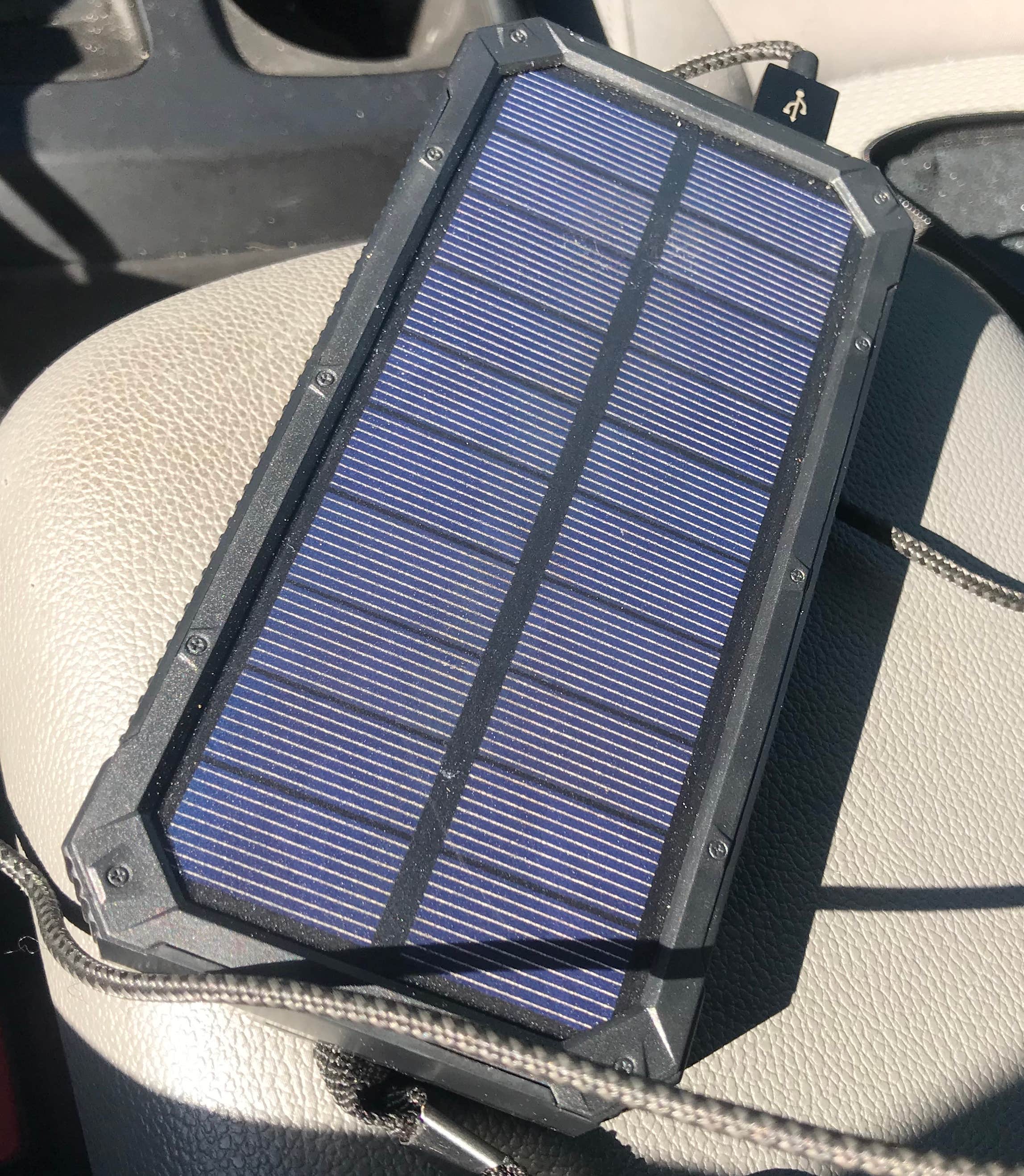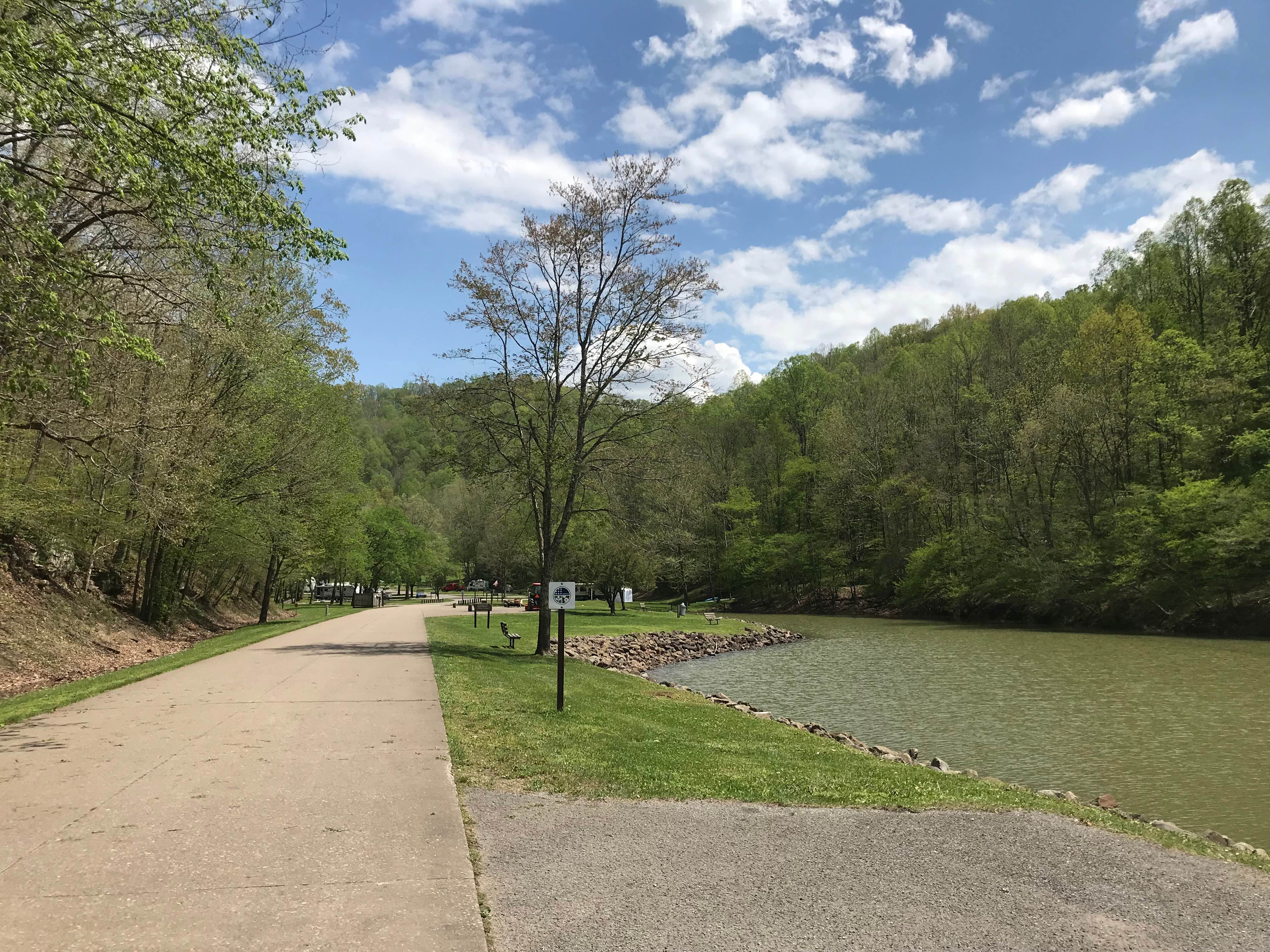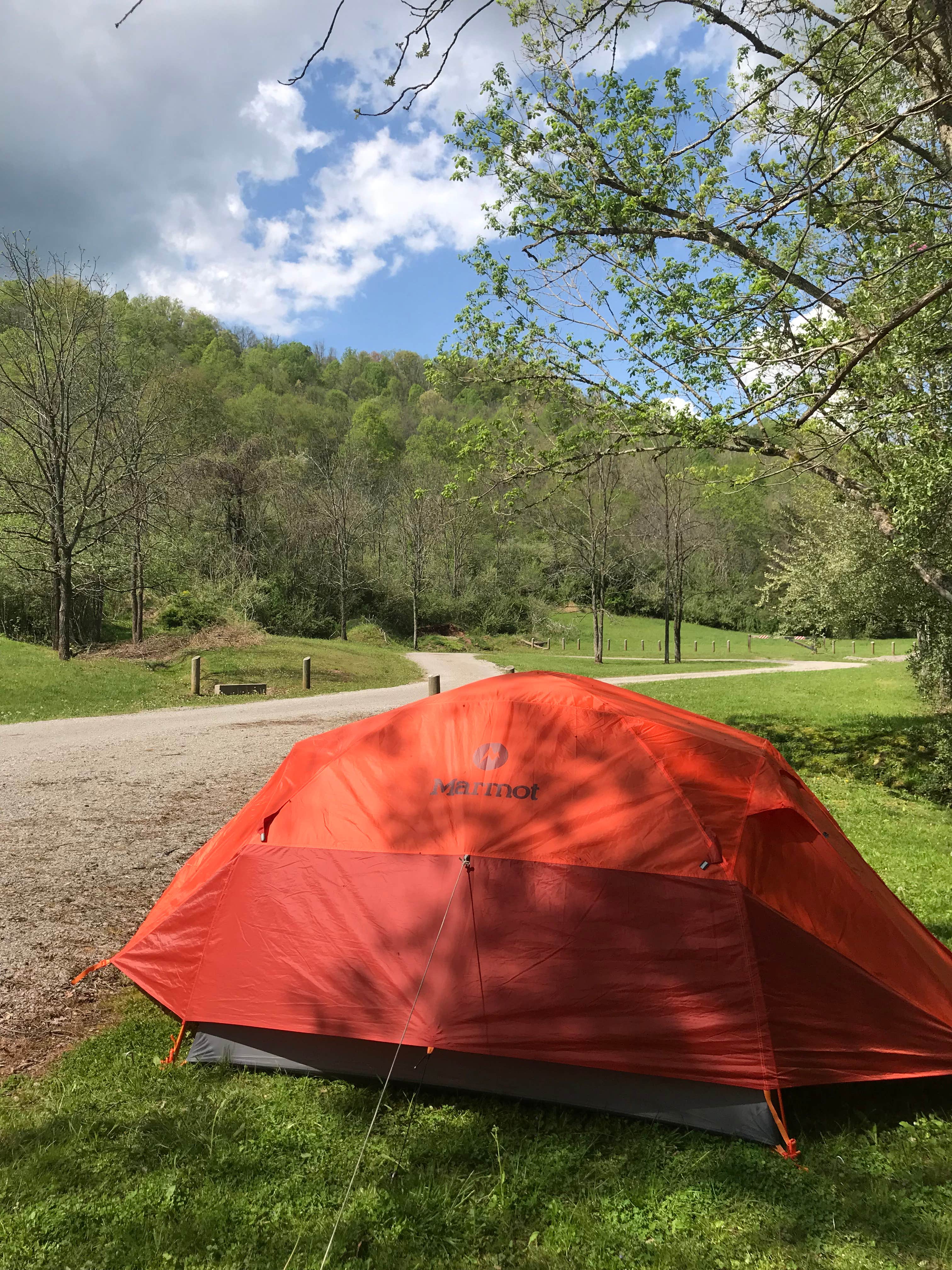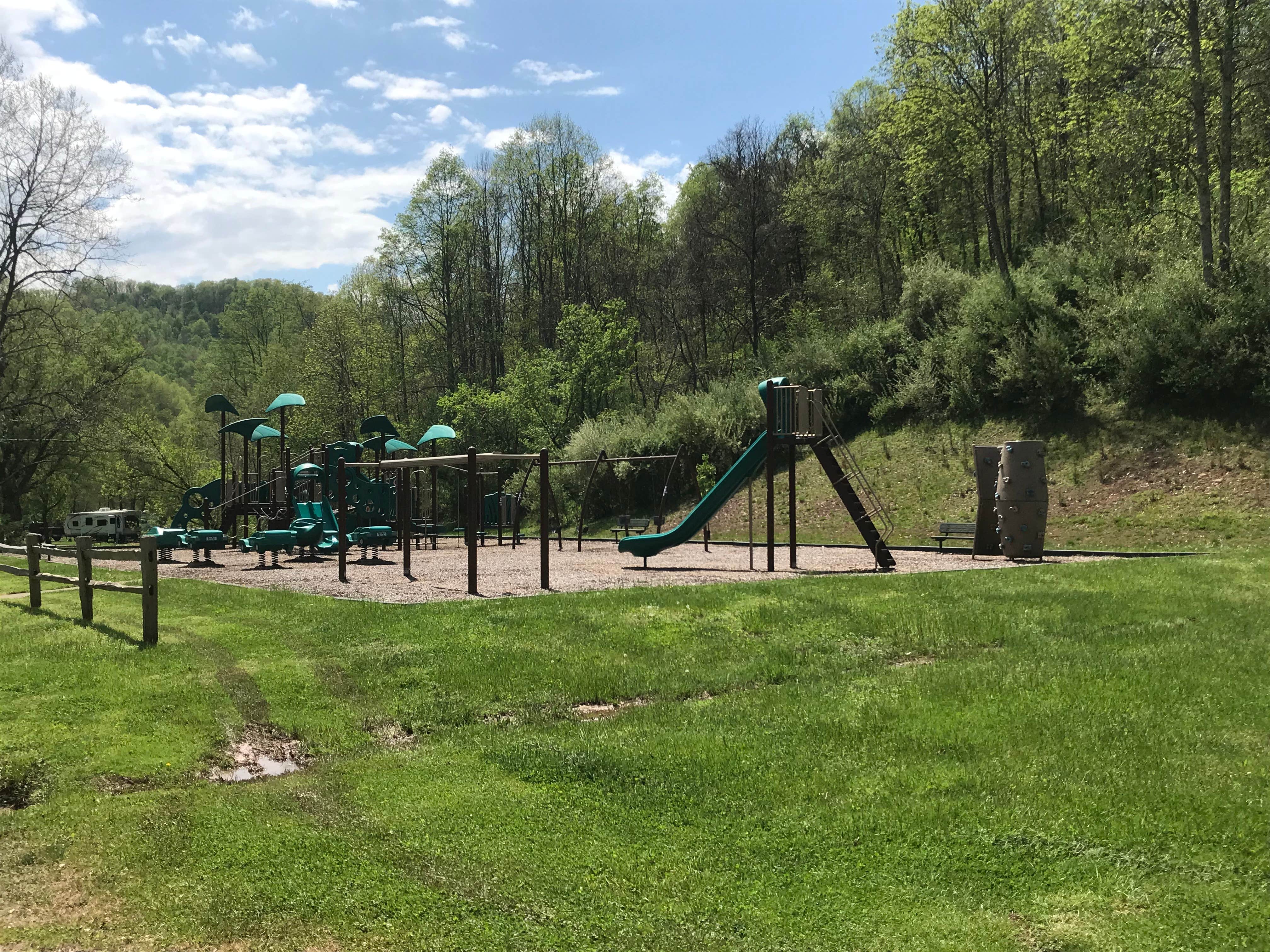RANGER REVIEW: Renogy Solar Power Bank at Riffle Run Campground, Army Corp of Engineers, Burnsville Lake Dam, West Virginia
Campground Review: Riffle Run Campground, Burnsville Lake Dam, Army Corp of Engineers
Riffle Run Campground, Burnsville Lake, Orlando, WVhttps://corpslakes.erdc.dren.mil/visitors/projects.cfm?ID=H102270
Riffle Run Campground is located on the northern end of the Corp of Army Engineer’s Burnsville Lake. A 60 site campground just beyond the dam and nestled in a mountain valley. Fifty Five sites have water/electric/sewer hookup…and five “primitive” sites (55-60) are allocated to tent campers beyond the turn-around. All sites have a lantern post, fire pit and picnic table. Parking pads are gravel. A centrally located showerhouse is as modern and spotlessly clean as one could want. Water for the primitive sites is located partway to the showerhouse between RV sites combined with a drinking fountain.
The grounds are meticulously maintained (as all Corp of Army Engineer Campgrounds are here in WV) and the grass looks like golf fairways. Campground hosts and volunteers work diligently to keep up the beautiful appearance.
https://m.youtube.com/watch?v=_W3j31xkKf0
$30 nightly for RV/Camper sites with full hook-ups, and $20 nightly for the primitive sites. Check-in was self service only on our visit in early May.
Burnsville Lake is a popular power boating and fishing lake, so even on weekdays there is ample activity on the water.
New state of the art playgrounds for the kids. Two exist in the campground and a third playground is located in the Day use picnic area just outside the campground entrance to the left…and a fourth playground in a day use picnic area just below the dam on the right as you enter the Burnsville Lake area. If you have kids…it’ll keep them busy. Both day use loops have restrooms and picnic shelters.
There are several trails that meander around the mountains…some are relatively steep but I would rate them as moderate. However, they are not well-marked or often used in early Spring, so it is very possible to get turned around and onto longer trails. They are exceptionally wide and grassy. Some of the steeper uphill/downhill areas are grassless. Bring a trail map and compass.
Wildlife abounds! Birds of every feather, deer, turkey, reptiles…yes, even copperheads (but we only saw black racers). There is a rather large pack of coyotes in the park that compete for night air-time with the owls.
Currently, this is one of the only campgrounds in West Virginia of the two dozen or so we’ve visited that has cell service. They still offer pay phones like most others, but we were able to send and receive messages, along with checking the weather. Remarkable!
Product Review: Renogy Solar Power Bank
Renogy Solar Power Bank 15000https://www.renogy.com/
PROS
•Small
•Lightweight
•Versatile
•2 USB ports
• Integrated LED light
•Additional detached light
CONS
•No instructions
•Finicky USB ports
The Renogy Solar Power Bank https://www.renogy.com/renogy-15000mah-solar-power-bank/ is a relatively small portable 15000mAh source of energy for handheld personal devices. Boasting a 2W solar panel with two USB outputs of 5.0V each.
As a Review Ranger for TheDyrt.com, the Renogy Solar Power Bank was provided by the company for testing and review.
Box contents:
•Renogy Solar Power Bank
•USB charging cord
•Carabiner clip
•Flexible USB reading light
The unit itself has a short lanyard attached to a plastic tab on the backside “top.” The tab does not appear too robust so I suspect this will be the first area of failure if attached to a backpack and bounces against the pack during hikes. However, there is a duplicate plastic attachment tab on the backside “bottom,” also. I will likely always secure the solar power bank to my pack utilizing both tabs with para cord.
On the “bottom” end of the case are two (2) USB ports, the charging port for AC charging of the power bank and four (4) LED lights that indicate what the current charge level is. As the power bank’s charge capacity diminishes, one or more blue LED lights will blink.
On the opposite side of the solar panel is an integrated six (6) LED light. An “on/off” button is located on the side of the case. A quick double tap activates the light, an additional tap activates the strobe function. I am uncertain of the exact lumens, but it is bright, lighting up an entire room.
The additional and separate light is 7” long, plugs into a USB port and has a flexible rubber shaft for adjusting the light where you desire it. I would describe the illumination more for reading, as it does not project a beam, but rather a soft glow.
At 15000 mAh, there should be plenty of juice to power up several handheld devices before needing recharged itself.
At a single full charge from an electrical outlet, the Renogy Solar Power Bank charged an iPhone 7
•First charge 23% to 100% in 1:35.
•Second charge 19% to 100% in 1:40
•Third charge 14% to 100% in 2:00
•Fourth charge 17% to 100% in 1:30
•Fifth charge iPad 41% to 65% (when the Solar Power Bank ran out of charging power)
Interestingly, the integrated LED lights still illuminated brightly, but it would not charge any devices after five heavy power outputs.
Charging in direct sunlight for 18 hours failed to yield positive results on this unit. Only producing one flashing indicating light of available power. Uncertain what the problem may be.
With continued usage, it appears that direct sunlight charging works, the blue LED charge indicator lights may be the issue. With one intermittent flashing indicator light a full charge on an iPhone 7 was complete in 1:15 from 11%. Upon calling Renogy tech support, they were unaware of any problems as this a new product.
I plugged the Renogy Solar Bank into an outlet shortly after and it fully charged displaying four solid LED indicator lights.
Final Thoughts
When fully charged from an AC outlet, the Renogy Solar Power Bank performs well, charging several handheld devices. When in direct sunlight, it produces a slower, but consistent charge. However, as previously noted, it does not utilize the solar panel to charge itself sufficiently in direct, consistent sunshine to be useful in that way.
On this Renogy Solar Power Bank, the USB ports felt a bit sloppy…as if there is not always positive contact. I found myself unplugging the USB cable and reinserting to receive s positive charge reading.
If used solely as a power bank that I powered up via an outlet and took into the field to get half dozen power-ups on my handheld devices it’s worth consideration, as it was very effective. The jury is out on relying on its solar charging capabilities in the backcountry.











